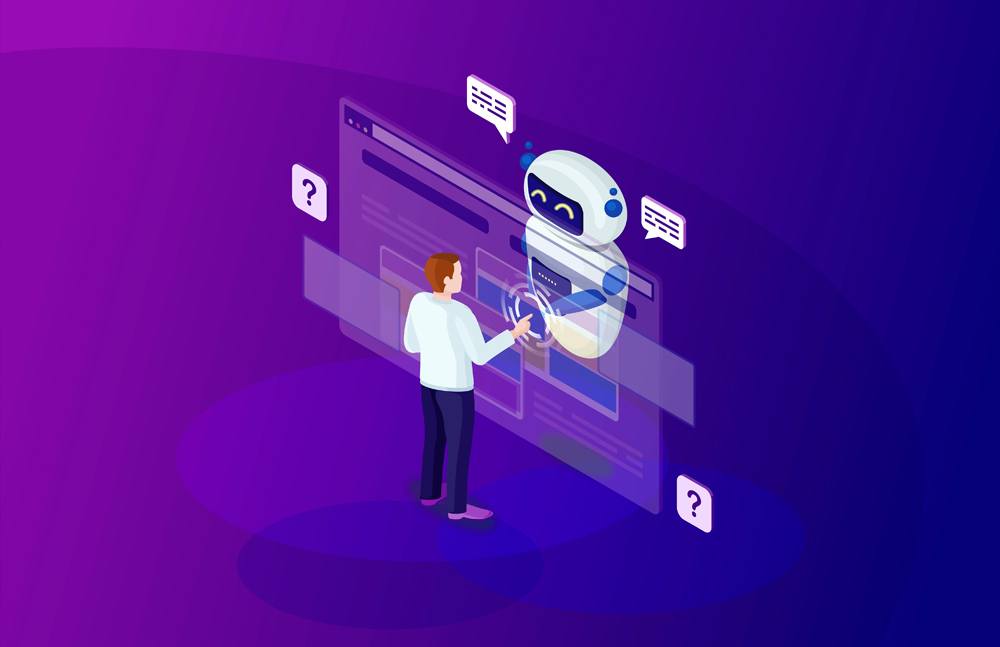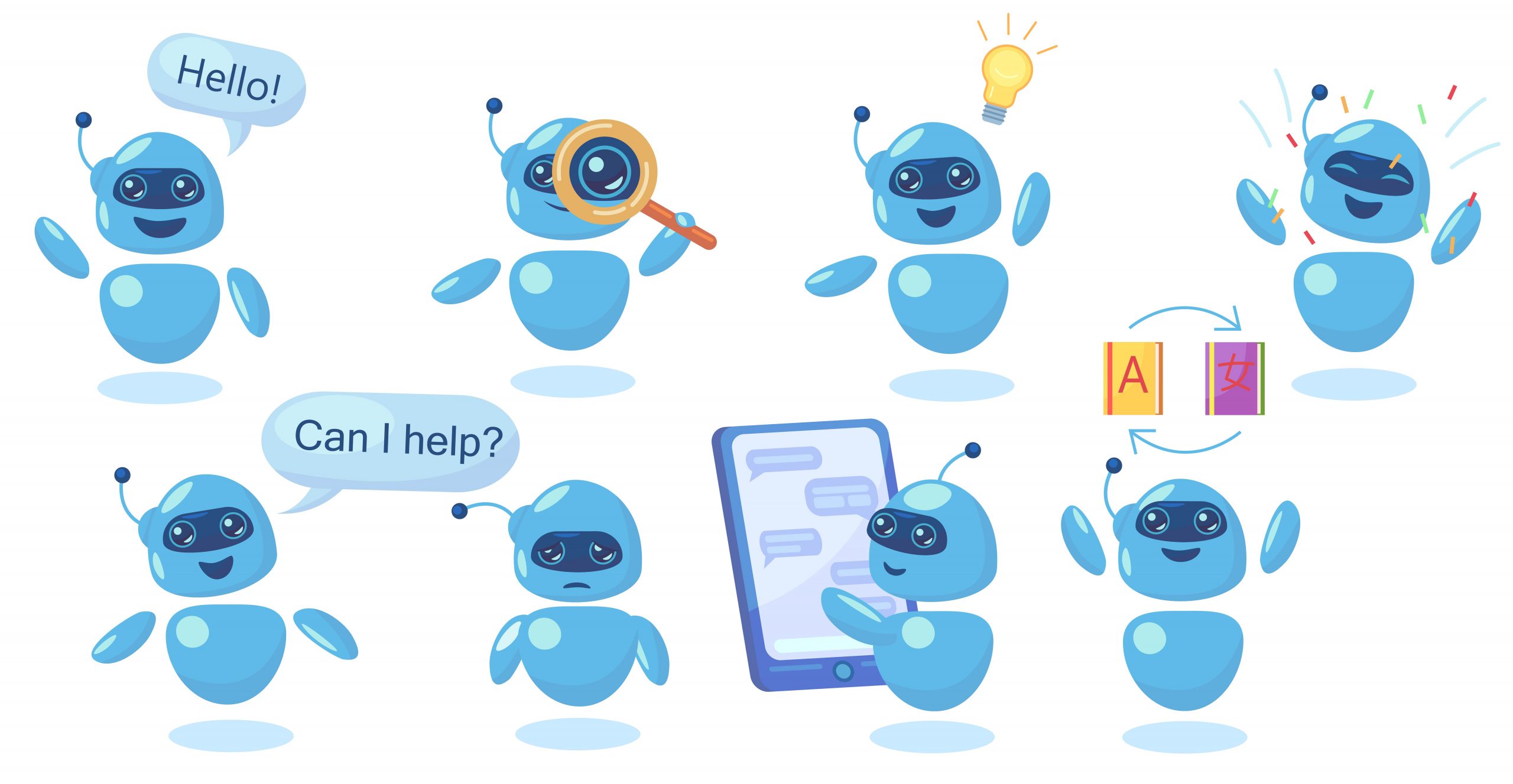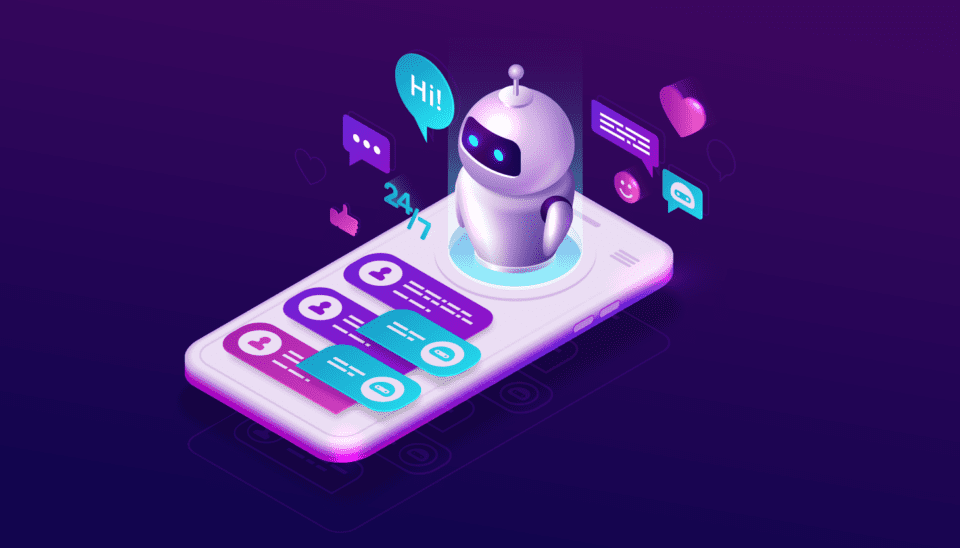In the ever-evolving and innovative field of Digital Marketing, campaigns have evolved into many different forms and styles.
We’ve seen the evolution from simple banner ads to dynamic Video Content, and now we’re welcoming a new era shaped by intelligent systems like Chatbots and AI. These technological innovations are more than just catchy words; they’re changing the way businesses interact with their audiences in the digital space.
Think back to a time when simple static websites were the norm. Businesses’ online presence was little more than a digital brochure, with no two-way interaction. But fast forward a few decades and we’re now seeing immersive experiences, augmented reality Advertising, and real-time interaction tools. The key to this transformation is the combination of human-like conversational interfaces and the powerful processing power of AI.
While they started out as simple scripted response systems, Chatbots, with the help of AI, have become advanced tools that businesses use to converse, educate, and understand their audiences. Instead of users just passively consuming content, they are now greeted with dynamic interactions that make their digital journey feel a little more ‘human’.
The Growing Importance of User Experience (UX) in Digital Marketing Strategy
In the digital world, there is a basic rule: “User experience is the key to success.” The smoother, easier, and more enjoyable the user journey is, the more likely they are to take a conversion action – whether that’s making a purchase, signing up for a newsletter, or just spending more time on your platform.
The Relationship Between User Experience (UX) and Conversion Rates
The ease of use of a website or app has a direct impact on the visitor’s decision-making process. When users have difficulty navigating or understanding information, they are more likely to leave immediately.
Conversely, when they have a smooth interactive experience and receive quick responses – like when using a Chatbot – they are more likely to engage and convert.
Traditional advertising has largely focused on broadcasting a message and hoping to attract the right audience. Today, the focus has shifted to conversation. AI-based chatbots facilitate this by providing customized responses based on user behavior and preferences, making the experience feel more like a personal conversation than just a generic broadcast.
What is Chatbot?
A Chatbot is essentially a computer program created to simulate communication with a user, but it does more than just give scripted responses.
Definition and History
The term “Chatbot” is derived from the phrase “chat robot”, reflecting its function of imitating human conversation. Originating in the early days of computing, the first Chatbots were quite simple, providing only basic responses to specific requests. The most famous and typical example from that time was ELIZA, a program created in 1966, designed to simulate a Rogerian psychologist. Over time, with the development of technology, both the capabilities and intelligence of these bots have also improved.

Types of Chatbots: Rule-Based and AI-Based
- Rule-Based Chatbot:
These chatbots operate according to fixed, pre-established rules. They are only capable of responding to certain commands and cannot recognize or process information outside the scope of these rules.
- AI Based Chatbot:
Modern chatbots use AI that goes beyond pre-scripted scenarios. They learn from user interactions, detect behavioral patterns, and process natural language. This allows them to understand and respond to a wide range of requests, even those that are not pre-programmed.
How Chatbots and AI are Changing Digital Campaigns
In today’s world of Digital Campaigns, significant growth has been driven by Chatbots and AI. These tools are reinventing the way businesses communicate with their audiences, making the process more efficient and personalized.
Customization at Scale: Delivering Personalized Experiences Without Human Intervention
Imagine you go to a store and the salesperson knows exactly what you need before you even open your mouth. Chatbots and AI enable the same experience online. By analyzing user behavior, preferences, and interaction history, AI-powered Chatbots can personalize the conversation with each user, ensuring they receive the right information and solutions.
See also: The Rise of Artificial Intelligence: Discover How Generative AI Is Breaking the Limits of Marketing
Chatbots are available 24/7: Chatbots that don’t need to rest
Traditional stores have fixed opening hours, and people need time to rest. Chatbots, on the other hand, are always on the go. Day or night, rain or shine, they are always there. This ensures that users get immediate answers to their queries, regardless of the time, thereby increasing their overall satisfaction.
Fast Response Time Increases User Engagement
Gone are the days when users were willing to wait for responses. In today’s fast-paced world, delays in response can turn users off. Chatbots provide instant interaction, keeping users engaged and happy, increasing the likelihood that they will stick around and convert.
Collect valuable user data to improve campaigns
Every interaction with a Chatbot yields insights. Whether it’s FAQs, user preferences, or feedback, AI-powered Chatbots capture and analyze this data. Marketers can use these insights to refine their campaigns, making them more effective and user-centric.

Benefits of Using Chatbots in Digital Campaigns
Chatbots, especially those powered by AI, can solve user problems quickly. From providing information, handling complaints, to guiding users through processes, Chatbots improve the efficiency of customer service.
Cost-effective solution to expand user engagement
Hiring staff for 24/7 customer support can be expensive. Chatbots are a budget-friendly option that allows businesses to expand support and engagement without significantly increasing costs.
Increase interaction through dialogue
Chatbots facilitate two-way interaction. Instead of simply scrolling through content, users engage in conversations, creating a richer experience and deeper engagement.
Additionally, there are Social Media management tools that support work on these platforms. They allow you to schedule posts in advance, view analytics, and manage different pages. A good example is Planly – a social media management tool with many useful features. With Planly, you can also prepare headlines for social media using the AI Content Assistant.

Collect and Analyze User Feedback in Real Time
User feedback is a valuable source of information. Chatbots can collect feedback during interactions, giving businesses instant insights into campaign performance and identifying areas for improvement.
Solving the challenges of using Chatbots in Digital Campaigns
While Chatbots have many advantages, they do have some disadvantages. Recognizing and addressing these challenges will help them operate effectively.
No system is foolproof. Chatbots can sometimes misunderstand a user’s question or provide incorrect information. Continuous monitoring and tweaking, along with a robust feedback system, can help minimize these errors.
The importance of continuous learning and updating
In an ever-changing digital world, Chatbots need to be updated periodically to reflect changes in user interactions, feedback, and technological developments.
Balancing automation and personalization
While automated chatbots are effective, personalization is still important. Businesses need to ensure that users can easily transition from the chatbot to direct contact with a human agent, especially with complex issues.
Conclude
As we conclude our exploration of Chatbots and AI in digital campaigns, it is clear that their impact on the industry is transformative and indispensable. Their remarkable ability to improve user experience, coupled with efficiency in business operations, highlights their role in modern marketing.
From their early days as scripted bots to the modern AI versions we use today, Chatbots have mirrored the evolution of digital campaigns. They are no longer just tools, but have become important elements that shape the user journey. Their constant availability, quick responses, and personalized interactions have improved user engagement, making them an integral part of every successful digital campaign.
However, it is important to remember that while Chatbots are powerful, they are not the right solution for every situation. Their implementation needs to be done carefully, prioritizing the needs of users and ensuring that the combination of automation and human interaction is not a substitute.
For businesses that haven’t yet adopted this technology, the message is: The future of enhancing user experience in digital campaigns is tied to the use of Chatbots and AI. And that future is right around the corner.
Entering this exciting digital era, businesses need to proactively find ways to integrate these intelligent systems into their strategies, continuously adjusting based on user interactions and feedback. Ultimately, in the digital world, evolution is not only inevitable but also a critical factor for survival and success.
Comment Policy: We truly value your comments and appreciate the time you take to share your thoughts and feedback with us. Note: Comments that are identified as spam or purely promotional will be removed. To enhance your commenting experience, consider creating a Gravatar account. By adding an avatar and using the same Email here, your comments will feature a unique and recognizable avatar, making it easier for other members to identify you. Please use a valid e-mail address so you can receive notifications when your comments receive replies.
